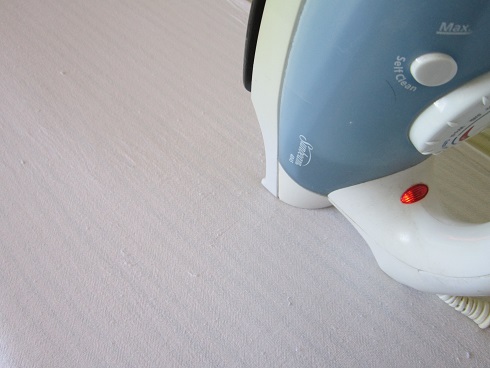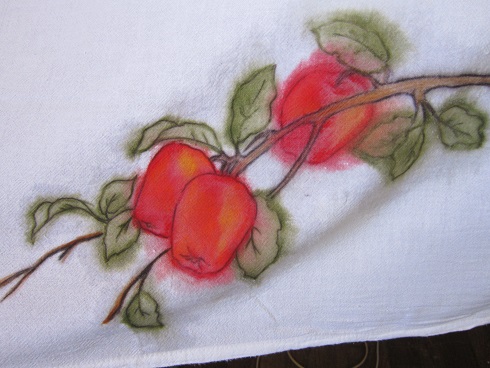You may remember that I posted some time ago about keeping an art journal. Part of my supplies for the art journal is a small set of Derwent Inktense dry ink blocks. I have known that these could be used on fabric and have wanted to fool around with them and today I did. So here's a tutorial on how to use Inktense color blocks to embellish a plain cotton dishtowel. I can certainly use some more practice, but the project was easy and quick and I think it is a useful technique to decorate items for the hope chest.
As far as materials go, you'll need a set of Inktense Blocks. These are dry, water-activated ink blocks. So you can draw or trace lines on the fabric and then activate the ink with water from a blender pen or a brush. It works just like a watercolor pencil, but the color is much more vibrant and intense. BTW, I have no affiliation - I just like this product. I got my set at Michael's. You will also need a 100% cotton dishtowel. You can draw a freestyle design on the towel, but I used an iron-on transfer because I'm just not that great at drawing. You'll also need a small cup of water to activate the ink and a couple small brushes. A black fine-tip Sharpie marker will be used to trace the original transfer design after the ink has dried. Oh, and you'll need something to protect the work surface since the ink will soak through to the other side.
Wash the towel to remove any sizing and then iron it smooth.
Center the design on the towel and follow the directions to transfer the design.
I first used the dark brown ink block to trace the branch of the apple tree. Then I lightly colored the branch with a lighter brown color. I traced the leaves with a dark green, and the apples with the red color. I added some orange to the apples and a bit of yellow as well.
The ink has to be wet in order to activate. Use the brush and a cup of water and "paint" over the lines of ink. The fabric will wick the water outside of the lines. I used a lot of water because I like this effect. You may wish to be more careful.
While the fabric is wet, you can use the block to add more color or use other colors to add shading. The ink goes on very thick when the fabric is already wet. Just use a little more water to make sure this second application of ink is activated and won't wash out later. Brush the ink further into the design to darken and shade the design.
After the ink is dry it becomes permanent. Because the inked lines become so blurred, I used a fine-point Sharpie pen to trace the transfer lines.
I ironed the towel again to heat set the ink. I know the ink is permanent, but with an item that will be used and washed often, I think the heat set will be a back up option. Even the back looks great!
So here is the finished towel. I've used wax crayons to color on fabric in other projects, but these vibrant Derwent Inktense Blocks are so lovely and work so much better, I believe. I am now planning even more projects! A simple design on a crib sheet would make a cute gift.













Beautiful! Thanks for sharing!
ReplyDeleteWow! Thanks so much for posting this! -- Alicia
ReplyDeleteThanks ladies!
ReplyDeleteI love your tutorials, crochet patterns, and new craft/gift ideas! I have made so many gifts from your site. Thank you for sharing your talents.
ReplyDeleteLisa
You are so sweet, Lisa. I'm very glad to have been useful.
DeleteI just wanted to tell you I love this idea. I have the blocks as well as the pencils. I think it will be a bit easier with the pencils!
ReplyDeleteThanks...I am starting a hope chest for my 13 year old granddaughter
That's great Teresa! I hope you find the projects creative and fun. I'm sure your granddaughter will love the hope chest.
DeleteWould it be safe to do this method and wash dishtowel frequently or is it purely just suitable for display pieces?
ReplyDeleteThe Derwent ink is permanent if you allow it to dry and heat set with an iron. I wash mine. Any ink will fade over time, especially with hot temperatures and sunlight. But these are remarkably persistent. Just use some care
Delete